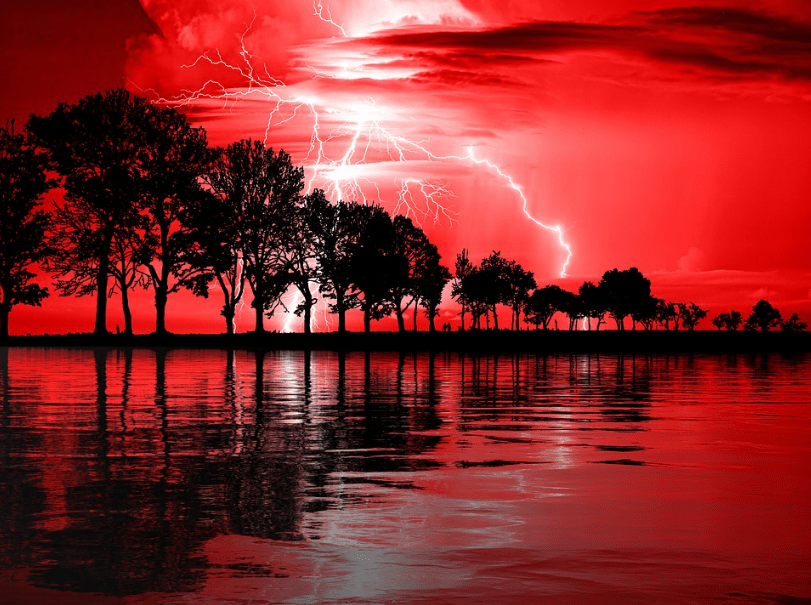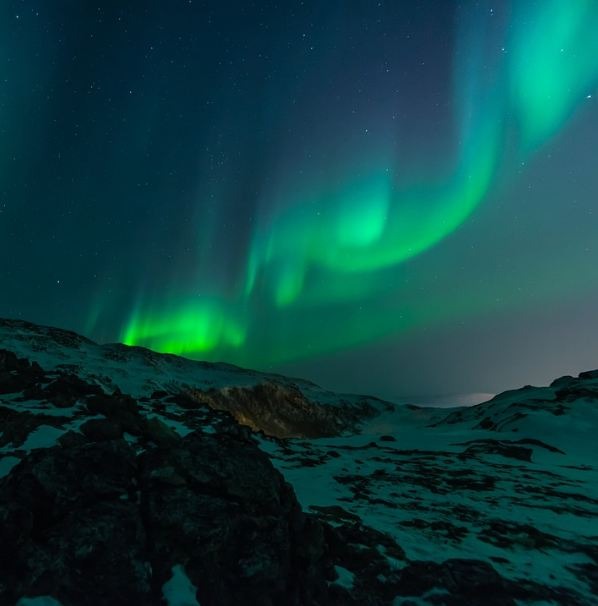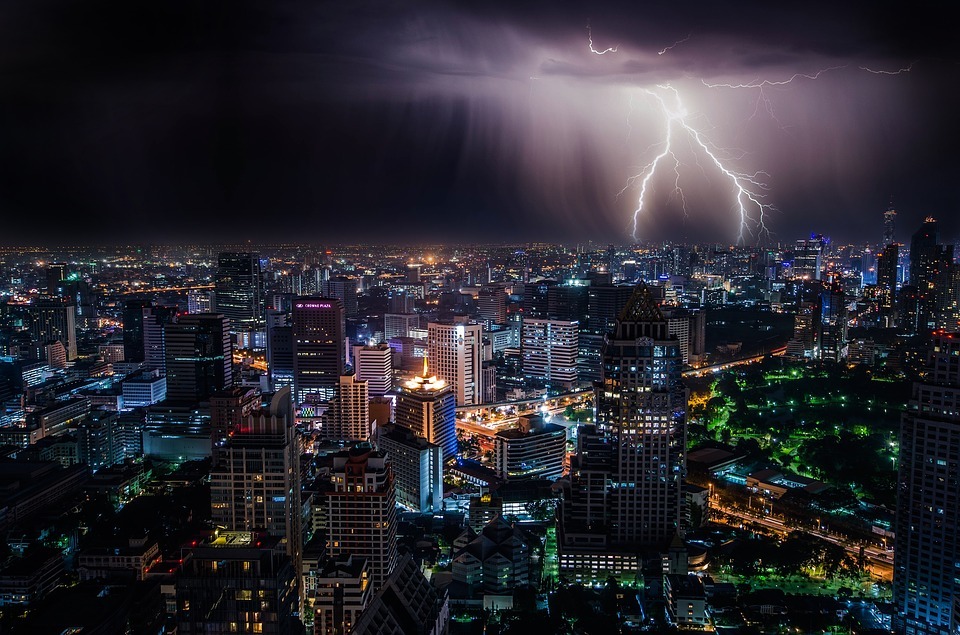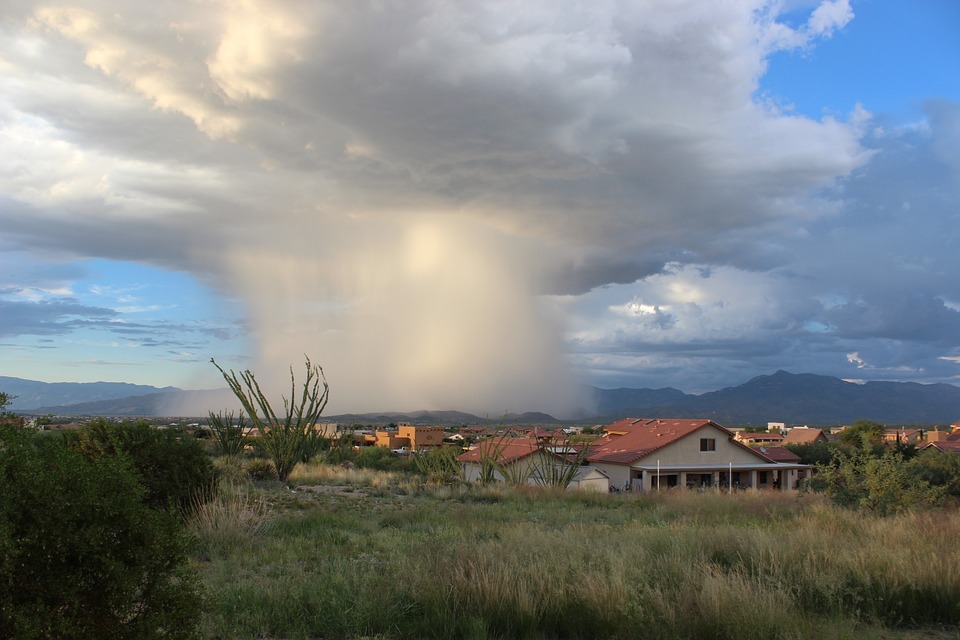The Northern Lights From Space: What Astronauts See
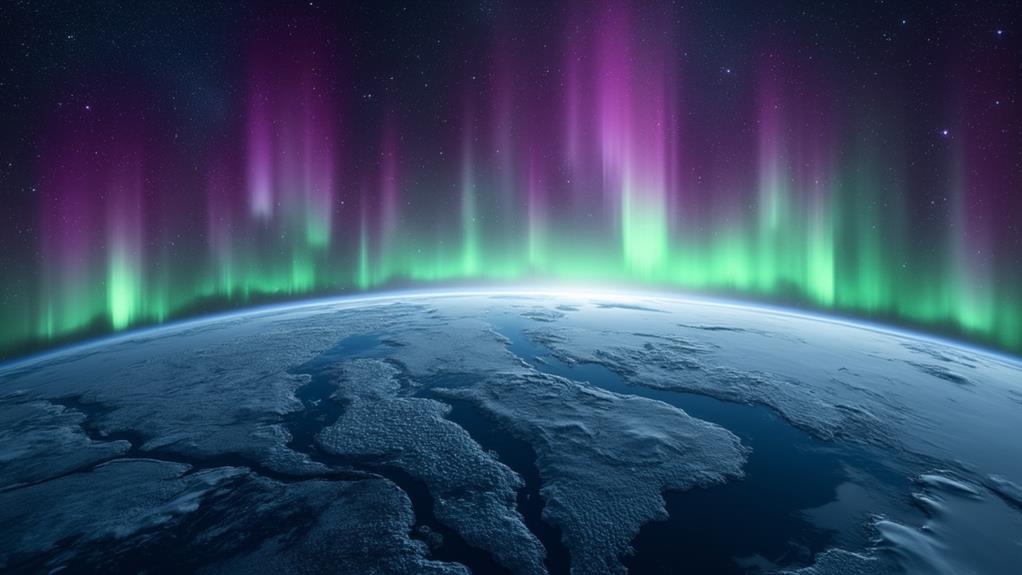
Imagine you're on the International Space Station, gazing out at Earth's atmosphere, when suddenly the Northern Lights begin their mesmerizing dance. You see lively greens, purples, and reds undulating across the horizon, a spectacle far different from the ground view. Astronauts have a front-row seat to this awe-inspiring phenomenon, capturing the intricate patterns and fluid motions with advanced photography techniques. But what exactly causes these vivid displays? Solar particles interact with Earth's magnetic field and atmosphere, creating these stunning lights. The next steps will uncover the science and stories behind these breathtaking scenes.
Historical Context
The history of the Northern Lights, or aurora borealis, dates back to ancient times. Indigenous peoples in the Northern Hemisphere have been captivated by these lights since at least 700 AD, attributing various cultural significances to them. Different tribes interpreted the aurora as either omens or spiritual messages. In the early 17th century, Galileo coined the term "aurora borealis," combining the Roman goddess of dawn, Aurora, and the Greek name for the north wind, Boreas.
The aurora australis, the Southern Hemisphere's counterpart, is less frequently observed due to its remote location. Despite this, both phenomena result from similar interactions between solar wind and Earth's magnetic field. The auroras are intricately linked to space weather, particularly solar storms.
In the late 19th century, scientists began to explain auroras in the context of Earth's magnetic field and solar activity, laying the groundwork for modern research into space weather phenomena. David Suzuki's documentary, "The Nature of Things," delves deeply into both the scientific and cultural aspects of auroras, highlighting their significance.
Causes of Color
The vibrant hues of the Northern Lights arise from the interaction between solar particles and atmospheric gases. When charged particles from the sun collide with Earth's atmosphere, they interact with different gases, emitting light that creates the mesmerizing colors you see in auroras.
Oxygen plays a crucial role in this phenomenon. At higher altitudes, above 200 km, oxygen collisions produce red auroras, while at lower altitudes, around 100 km, they yield green auroras. Nitrogen also contributes to the display, bringing blue and violet colors to the sky. These color variations depend on the type of gas involved and the altitude of the collisions.
The density and composition of the atmosphere, along with the intensity and energy of the incoming solar particles, further influence the visible colors. Denser atmospheric conditions can modify the shades and reach of the auroras. Thus, when you see lively greens, reds, and violets in the sky, you're witnessing a complex interplay of solar energy and Earth's atmospheric and magnetic field dynamics.
Movement and Appearance
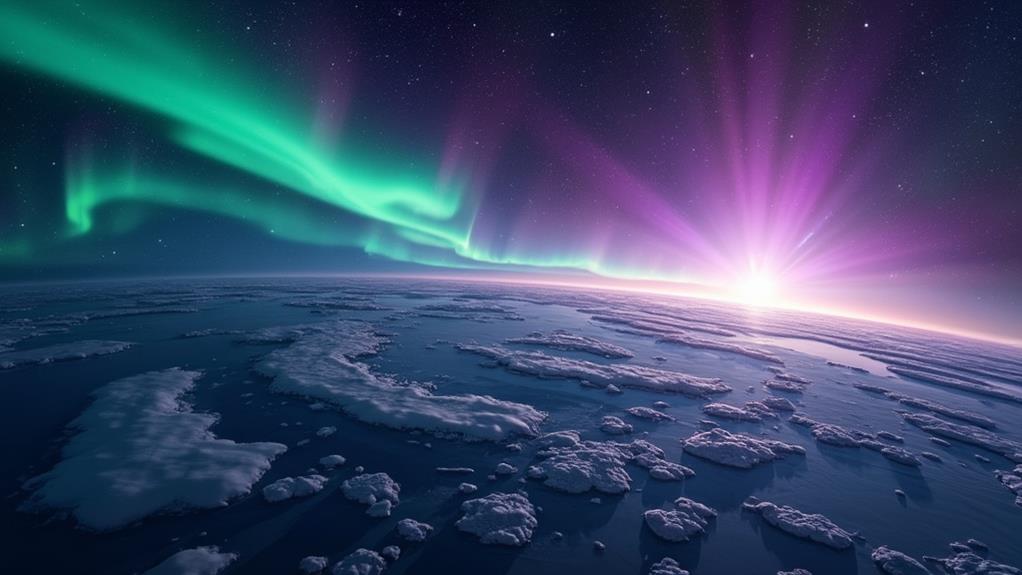
Observing the northern lights reveals how they seem to dance across the sky, forming shapes like curtains, crowns, and rainbows. This movement and appearance depend on the solar wind's strength and speed, making each display unique. From different locations, observers might see varied patterns, highlighting the personal and subjective nature of these experiences.
Dancing Light Patterns
Auroras seem to dance across the sky, creating mesmerizing light patterns that captivate onlookers. These displays result from interactions between solar winds and Earth's magnetic field. When solar winds, carrying energetic particles, collide with the magnetosphere, they generate the stunning aurora borealis. The dynamic patterns you observe are influenced by radio waves known as Chorus, causing the auroras to shift and move unpredictably.
The shapes of auroras can vary widely, appearing as curtains of light, crowns, or even arcing rainbows. The strength and speed of the solar winds play a crucial role in determining the forms and intensity of these displays. Different viewing locations can result in entirely different patterns, as the observer's position greatly affects the perception of the auroras.
Satellite data, combined with ground-based observations, enhances our understanding of these phenomena. By studying this data, scientists can more accurately predict the movement and characteristics of auroras. So next time you're under a sky lit up by the northern lights, remember that the dancing patterns are a complex interplay of cosmic and terrestrial forces.
Shape and Perspective
The mesmerizing dance of auroras invites us to contemplate their shapes and how we perceive them. You might be awestruck by how these light formations vary dramatically, appearing as curtains of light, crowns, or even arcing rainbows. This variability is primarily influenced by the solar winds, which determine the intensity and form of the displays.
From your unique vantage point, you'll notice that these shapes can seem to move dynamically across the sky, a phenomenon driven by electromagnetic waves known as Chorus. These waves cause the lights to "dance" in a way that feels almost otherworldly.
Consider these intriguing formations:
- Curtains of Light: Often appear as long, flowing sheets that ripple across the sky.
- Crowns: These formations can look like ethereal, circular bursts directly overhead.
- Arcing Rainbows: Sometimes, the lights curve gracefully, resembling a giant, luminous arc.
Your perception of the auroras also depends on your location and the angle of observation. Two people standing miles apart can witness entirely different displays, making each experience uniquely personal. Ground-based observations and satellite data together provide a fuller picture of these enchanting movements and appearances.
Geographic Reach
During powerful solar storms, the geographic reach of the northern lights (aurora borealis) and southern lights (aurora australis) can extend significantly beyond their usual polar confines. For instance, during intense geomagnetic events, auroras have been observed as far south as Texas and Mississippi. A notable historical example is the solar storm of 1859, also known as the Carrington Event, where auroras were visible as far south as the Caribbean.
The intensity of a solar storm is crucial in determining the geographic reach of auroras. Recent G4 (severe) storms have enabled people in unexpected locations to witness these mesmerizing displays. If you are in a rural area with dark skies, your chances of seeing an aurora increase significantly during periods of high solar activity.
Here's a summary of how far south auroras have been observed based on different solar storm intensities:
| Solar Storm Intensity | Northern Lights Reach | Southern Lights Reach |
|---|---|---|
| Moderate (G2) | Northern US | Southern Australia |
| Strong (G3) | Mid-US | Northern New Zealand |
| Severe (G4) | Texas, Mississippi | Argentina |
| Extreme (G5) | Caribbean | South Africa |
As solar activity increases, expect auroras to extend closer to the equator, providing more people with the opportunity to witness this awe-inspiring phenomenon.
Extraterrestrial Auroras
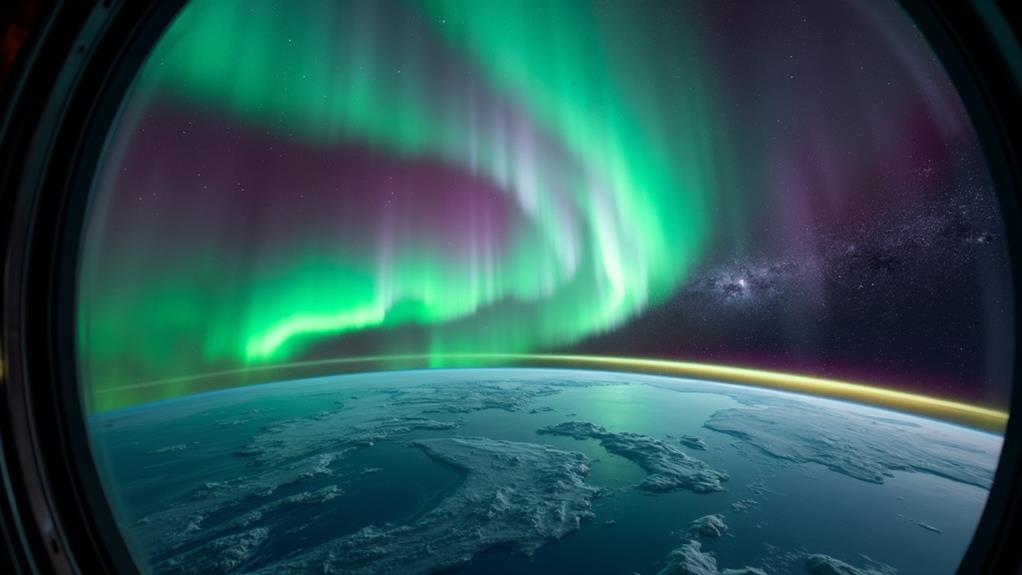
Investigating auroras beyond Earth reveals equally captivating phenomena on other planets. Jupiter and Saturn, for instance, exhibit auroras that are significantly more powerful than those on Earth. These mesmerizing displays result from the interaction of solar wind with the planets' magnetic fields and atmospheres, emitting both light and radio waves.
Studying extraterrestrial auroras provides scientists with valuable insights into the atmospheric composition and magnetic field dynamics of these distant worlds. For example, detecting gases like oxygen in these auroras could suggest conditions that might support alien life.
Consider these interesting points:
- Jupiter's Auroras: These are hundreds of times more energetic than Earth's due to Jupiter's exceptionally strong magnetic field.
- Saturn's Light Show: Saturn's auroras, influenced by its rapid rotation and intricate magnetic field, create stunning visual displays.
- Mars and Venus: Researchers monitor these planets for auroras to better understand their space weather environments and atmospheric dynamics.
Astronaut Experiences
Imagine capturing the vibrant hues of the Northern Lights from the International Space Station. Astronauts like Matthew Dominick and Jasmin Moghbeli have shared breathtaking images and videos, offering a unique perspective on these celestial displays. With the ISS orbiting Earth every 90 minutes, they have multiple opportunities to witness and document these stunning auroras.
Capturing Auroras Aboard ISS
NASA astronaut Matthew Dominick has been capturing stunning images of auroras from the International Space Station (ISS) using advanced photography techniques and newly arrived lenses designed for aurora photography. Positioned 250 miles above Earth, the ISS provides an unparalleled vantage point, allowing Dominick to photograph auroras as expansive, dynamic displays that far exceed those seen from the ground.
Here are some fascinating aspects of his work:
- Time-lapse videos: Dominick creates time-lapse videos that showcase the interactions of auroras with celestial bodies like the Moon and the sunrise over Earth.
- Perspective rotation: He rotates his images 180 degrees, offering both upside-down and right-side-up versions for a natural viewing experience.
- Frequent photographing opportunities: The ISS experiences nighttime every 90 minutes, giving astronauts multiple chances to capture auroras during peak solar activity.
Dominick's images provide a unique glimpse into the beauty of auroras from space, with the ISS's vantage point making these natural light shows even more spectacular. As solar activity increases in the coming years, expect more breathtaking visuals from the ISS, where astronauts like Dominick continue to push the boundaries of aurora photography.
Unique Perspectives From Space
Astronaut experiences aboard the International Space Station (ISS) offer a unique perspective on the Northern Lights, revealing aspects that few can imagine. Astronaut Matthew Dominick's stunning time-lapse videos from 250 miles above Earth showcase the auroras in vivid detail. From this vantage point, the colors appear more vibrant and expansive than when viewed from the ground.
The ISS orbits Earth approximately every 90 minutes, allowing astronauts like Dominick to observe auroras multiple times during each orbit, especially at night. From space, it is possible to see how the auroras extend into the upper atmosphere and interact with Earth's magnetic field, creating dynamic, ever-changing displays.
Astronauts often describe their view of the auroras as intensely beautiful and almost surreal. Advanced camera equipment and techniques, such as rotating images to capture the natural perspective, enable them to share these awe-inspiring sights with the public. The combination of high-quality visuals and the unique vantage point of the ISS ensures that astronauts' experiences of auroras are unparalleled, offering a glimpse into a cosmic phenomenon that is both scientifically fascinating and visually striking.
Photography Techniques
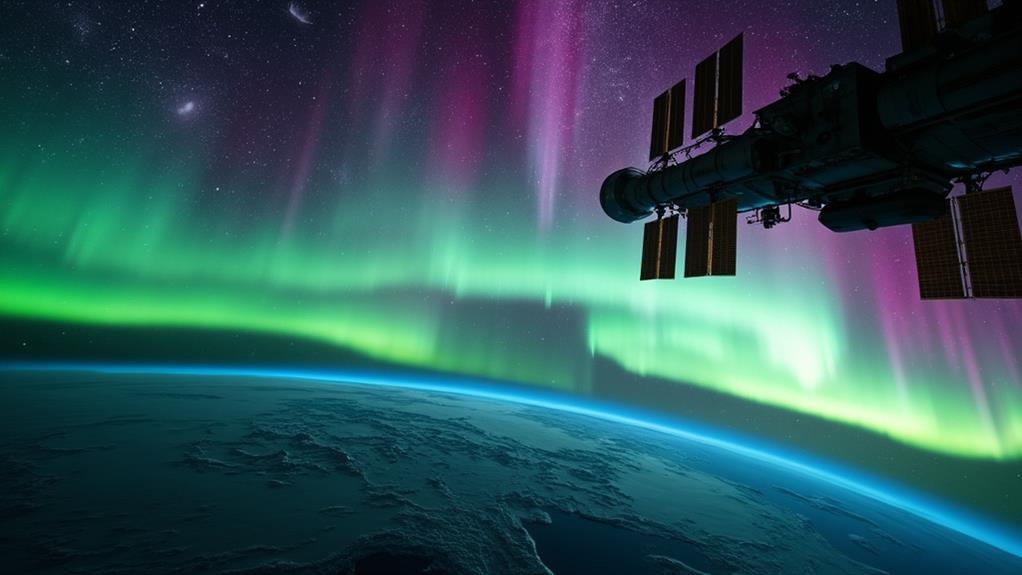
Capturing the Northern Lights from space involves advanced photography techniques honed by astronauts through extensive experience. They employ long exposure settings on their cameras to gather more light, which enhances the vibrant colors and intricate details of the auroras. This approach is particularly effective from the International Space Station (ISS), where the cupola offers an unmatched panoramic view of Earth's atmosphere aglow with the lights.
To further improve the clarity and detail of auroras, astronauts use specialized lenses designed for astrophotography. These lenses enable sharper, more detailed images, capturing the essence of the auroras' dynamic movements. Additionally, time-lapse video techniques are utilized to highlight the auroras' fluid, undulating patterns, providing a mesmerizing visual experience.
Key Techniques:
- Long Exposure Settings: Gather more light for vibrant, detailed images.
- ISS Cupola: Offers ideal panoramic views for aurora photography.
- Astrophotography Lenses: Enhance image sharpness and detail.
Astronaut Matthew Dominick adds a unique perspective by rotating aurora images 180 degrees, offering both upside-down and right-side-up views. These combined techniques deliver a comprehensive and awe-inspiring portrayal of the Northern Lights from space, making them accessible and captivating to all.
Communication and Outreach
Sharing the breathtaking images of the Northern Lights captured from the ISS isn't just about their beauty; it's also about igniting curiosity and raising awareness. When NASA astronaut Matthew Dominick participated in a live interview with FOX Weather, he not only shared his experiences photographing auroras from space but also emphasized the importance of understanding space weather. By discussing solar flares and their impacts, Dominick aimed to enhance public awareness of how these phenomena affect technology and daily life on Earth.
Dominick's outreach extended beyond the interview. He showcased a stunning time-lapse video of auroras, quickly amassing nearly 800,000 views. This engagement underscores NASA's commitment to using captivating visual content to promote awareness of space weather and its implications. By connecting scientific discoveries to the public through media and social platforms, NASA fosters a broader interest in space phenomena.
Your curiosity about the universe can be sparked by these breathtaking images and stories. NASA's outreach initiatives, featuring astronauts like Dominick, strive to make space science more accessible and engaging. By understanding solar activity and its effects, we can better appreciate the dynamic nature of our universe.

